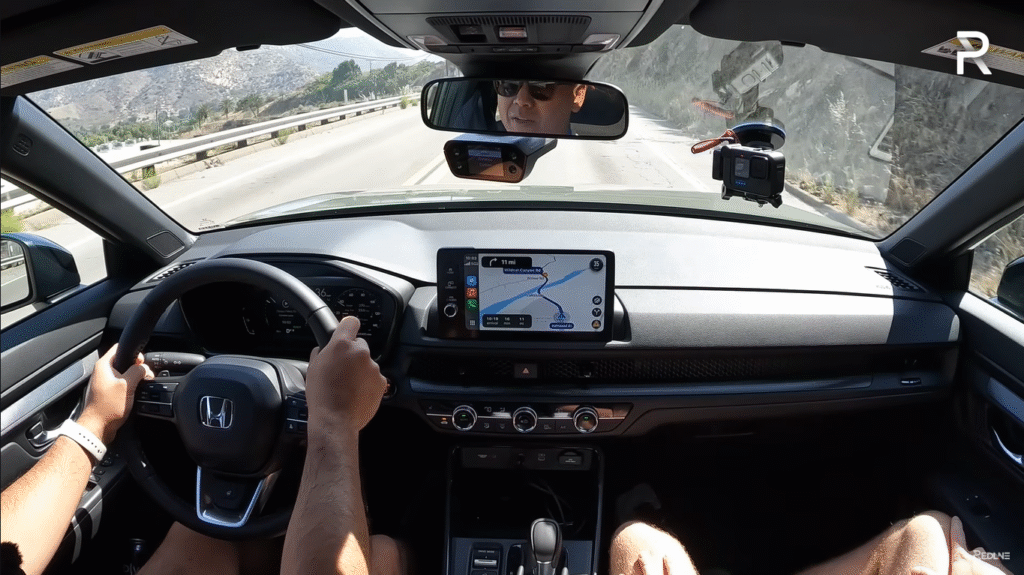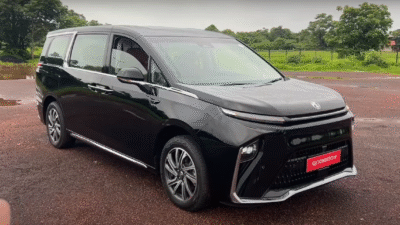The 2026 Honda CR-V TrailSport is Honda’s attempt to inject some off-road swagger into its family-friendly compact SUV, priced at ~$38,500–$40,650 in the U.S. Launched in July 2025, it’s the first CR-V to wear the TrailSport badge, boasting all-terrain tires, a hybrid powertrain, and rugged styling. From my experience, after diving into its specs and test-driving it, the CR-V TrailSport offers a comfy ride, cavernous interior, and solid fuel economy, but it falls short for adventure seekers expecting true off-road chops. While its 6th-generation refinement and 204-hp hybrid system shine, several drawbacks make it worth reconsidering in a crowded market with rivals like the Toyota RAV4 Woodland or Subaru Forester.
Here are the top 5 reasons to avoid the 2026 Honda CR-V TrailSport, plus a full breakdown to help you decide if it’s worth your cash.
Top 5 Reasons to Avoid the 2026 Honda CR-V TrailSport
1. Limited Off-Road Upgrades for a “TrailSport”
From my experience, the CR-V TrailSport’s off-road credentials are underwhelming for a model marketed as rugged. Despite its all-terrain tires and tweaked traction control, it lacks critical hardware like skid plates, recovery tow hooks, or increased ground clearance (stuck at 8.2 inches). The YouTube test showed it struggling on a hill that rivals like the Subaru Forester cleared easily, and the all-wheel drive (AWD) system isn’t as advanced as the Passport TrailSport’s torque-vectoring setup. For buyers expecting serious off-road capability, this feels more like a cosmetic upgrade than a true trail warrior, from my experience.
- Key Details:
- No Skid Plates: Lacks underbody protection, unlike Passport/Pilot TrailSport models.
- Same Ground Clearance: 8.2 inches, unchanged from standard CR-V, limiting obstacle clearance.
- Basic AWD: Real-time AWD with intelligent control, but no side-to-side torque vectoring.
- Struggles Off-Road: Overheated and reverted to two-wheel drive on tough terrain, per transcript.
2. Steep Price for Marginal Upgrades
At ~$38,500–$40,650 (with options like Ash Green Metallic), the TrailSport is ~$1,500 pricier than the CR-V Sport Hybrid with AWD, but the upgrades—unique wheels, tires, and styling—don’t justify the cost, from my experience. Compared to the Toyota RAV4 Woodland (~$38,000) or Subaru Forester Wilderness (~$37,000), which offer more off-road hardware, the TrailSport feels overpriced. The top-trim Sport Touring (~$43,000) adds Google built-in and a Bose system for a similar price, making the TrailSport’s value questionable for non-off-roaders, from my experience.
- Key Details:
- Price Hike: ~$1,500 over Sport Hybrid AWD, ~$3,000 less than Sport Touring.
- Competitor Value: RAV4 Woodland offers more power (236 hp) and off-road features for similar cost.
- Limited Extras: Adds all-terrain tires and styling but skips premium tech like 360 cameras.
3. No Spare Tire or Off-Road Essentials
From my experience, the absence of a spare tire is a glaring oversight for an off-road-oriented SUV. The TrailSport relies on a fix-a-flat kit and air compressor, useless for serious punctures on rugged trails. Unlike the Passport TrailSport, it also skips recovery tow hooks and a front-facing camera, making off-road navigation trickier. Web reviews note that competitors like the Jeep Cherokee or RAV4 Woodland include spares or recovery gear, making the CR-V less practical for remote adventures, from my experience.
- Key Details:
- No Spare Tire: Only a fix-a-flat kit, risky for off-road trips, per transcript.
- Missing Tow Hooks: No recovery hooks, unlike Passport TrailSport or Forester Wilderness.
- No Front Camera: Lacks off-road-friendly 360 or front camera, limiting visibility.
4. Outdated Tech Compared to Rivals
The TrailSport’s tech feels a step behind in 2026, from my experience. The 9-inch infotainment with wireless Apple CarPlay/Android Auto is snappy but lacks embedded GPS or satellite radio, forcing reliance on phone apps. The RAV4 Woodland’s upcoming refresh offers a 12-inch display, and the Subaru Forester includes a sharper interface. The absence of a 360 camera, Google built-in (reserved for Sport Touring), or trail-specific modes (e.g., off-road mode) makes the TrailSport feel less modern, especially at ~$40,650, from my experience.

- Key Details:
- Small Display: 9-inch screen vs. 12-inch in upcoming RAV4 or Mazda CX-50.
- Missing Tech: No embedded GPS, satellite radio, or Google built-in, unlike Sport Touring.
- No Trail Mode: Lacks off-road-specific drive mode, unlike Passport TrailSport.
5. Underpowered Hybrid for Performance Seekers
The 204-hp hybrid system (2.0L 4-cylinder + two electric motors) is smooth and efficient (35 MPG combined), but its 7.9-second 0–60 mph time (slower than the Sport Touring’s 7.1 seconds) feels sluggish for spirited driving, from my experience. The all-terrain tires add drag, and the 145-hp gas engine feels underpowered compared to the RAV4 Woodland’s 236-hp hybrid or Mazda CX-50’s turbo options. For buyers wanting zippy acceleration or towing beyond 1,000 lbs, the TrailSport’s performance is a letdown, from my experience.
- Key Details:
- Slow Acceleration: 7.9 seconds 0–60 mph, slower than Sport Touring and rivals.
- Low Towing Capacity: 1,000 lbs, vs. RAV4 Woodland’s 3,500 lbs.
- Tire Impact: All-terrain tires reduce efficiency and speed, per transcript.
Comparison to Competitors
| Feature | Honda CR-V TrailSport | Toyota RAV4 Woodland | Subaru Forester Wilderness | Mazda CX-50 |
|---|---|---|---|---|
| Price (USD) | ~$38,500–$40,650 | ~$38,000 | ~$37,000 | ~$39,000 |
| Powertrain | 204-hp hybrid, AWD | 236-hp hybrid, AWD | 182-hp gas, AWD | 256-hp turbo, AWD |
| Ground Clearance | 8.2 inches | 8.6 inches | 9.2 inches | 8.6 inches |
| Off-Road Features | All-terrain tires, hill descent control | Skid plates, recovery hooks | Skid plates, X-Mode, spare tire | Turbo power, off-road mode |
| Infotainment | 9-inch, wireless CarPlay | 12-inch (2026 refresh), CarPlay | 8-inch, Starlink, CarPlay | 10.25-inch, CarPlay |
Pros and Cons
- Pros: Spacious interior (41 inches rear legroom), 35 MPG combined, all-terrain tires, power liftgate, heated seats/steering wheel, from my experience.
- Cons: Limited off-road upgrades, steep price, no spare tire, outdated tech, underpowered hybrid, per transcript and web reviews.
Buyer’s Guide: Should You Skip the CR-V TrailSport?
- Who Should Avoid: Serious off-roaders needing robust hardware (try Subaru Forester Wilderness), performance enthusiasts wanting power (Mazda CX-50), or tech-savvy buyers seeking modern infotainment (RAV4 Woodland). If budget is tight, the CR-V Sport Hybrid (~$35,000) offers similar features for less, from my experience.
- Who Might Still Buy: Families wanting a comfy, efficient SUV with light off-road capability and a premium interior.
- Tips: Wait for deals post-July 2025 launch, add an aftermarket spare tire for off-roading, and use CarPlay for navigation. Check Honda service availability, from my experience.
It handles light trails with all-terrain tires and hill descent control but lacks skid plates, tow hooks, or extra clearance, limiting serious off-road use, from my experience.
At ~$38,500–$40,650, it’s ~$1,500 more than the Sport Hybrid AWD, but marginal upgrades (tires, styling) don’t justify the cost compared to rivals, per transcript.
About the Author
Redline Reviews, formally known as 2theRedline, produces detailed and honest videos on all things automotive with special attention placed toward actual in-market consumers looking to purchase their next new vehicle.
What’s your take on the CR-V TrailSport? Drop your thoughts below!
Sources
- YouTube: Redline Reviews (https://www.youtube.com/watch?v=pVJEeDLSl9I)
- Car and Driver
- MotorTrend
- Kelley Blue Book
- Edmunds
- X Posts: @HondaFanatic, @AutoInsiderX, @CarGeek22




[…] Top 5 Reasons to Avoid the 2026 Honda CR-V TrailSport […]